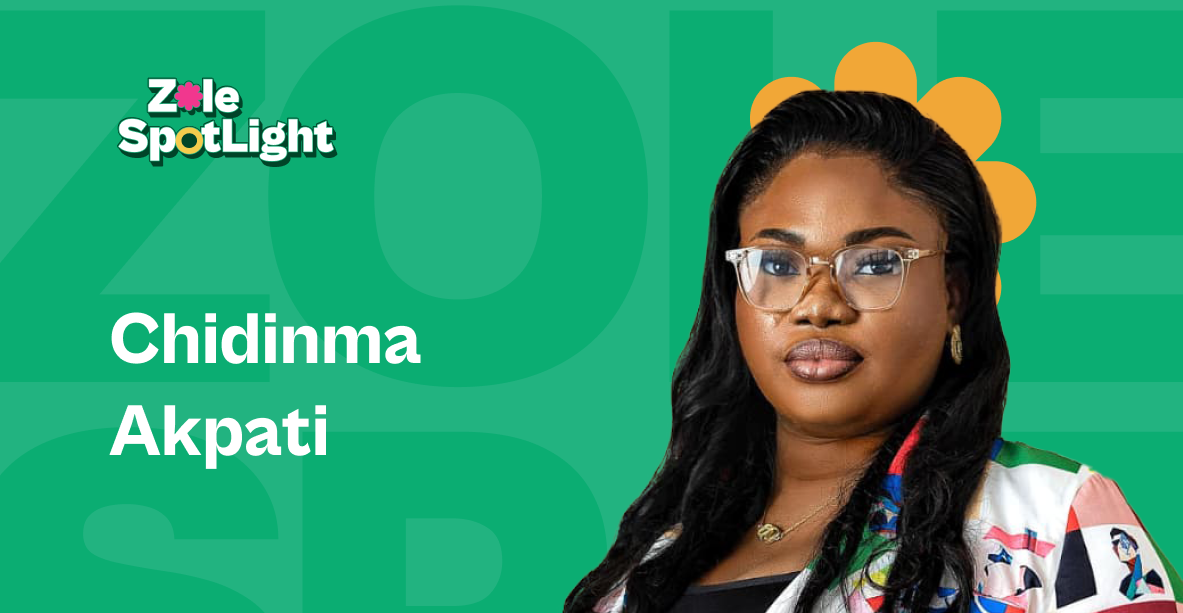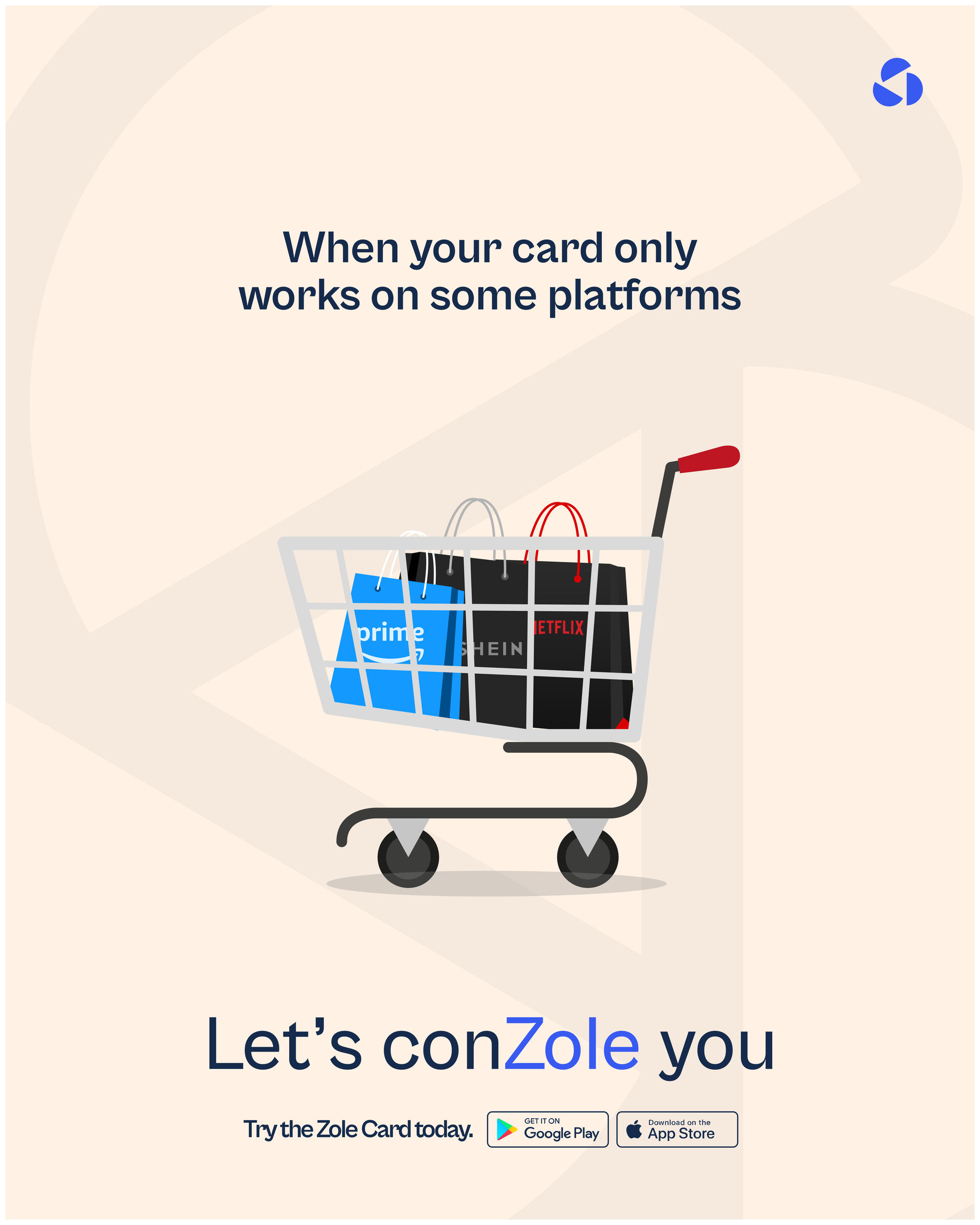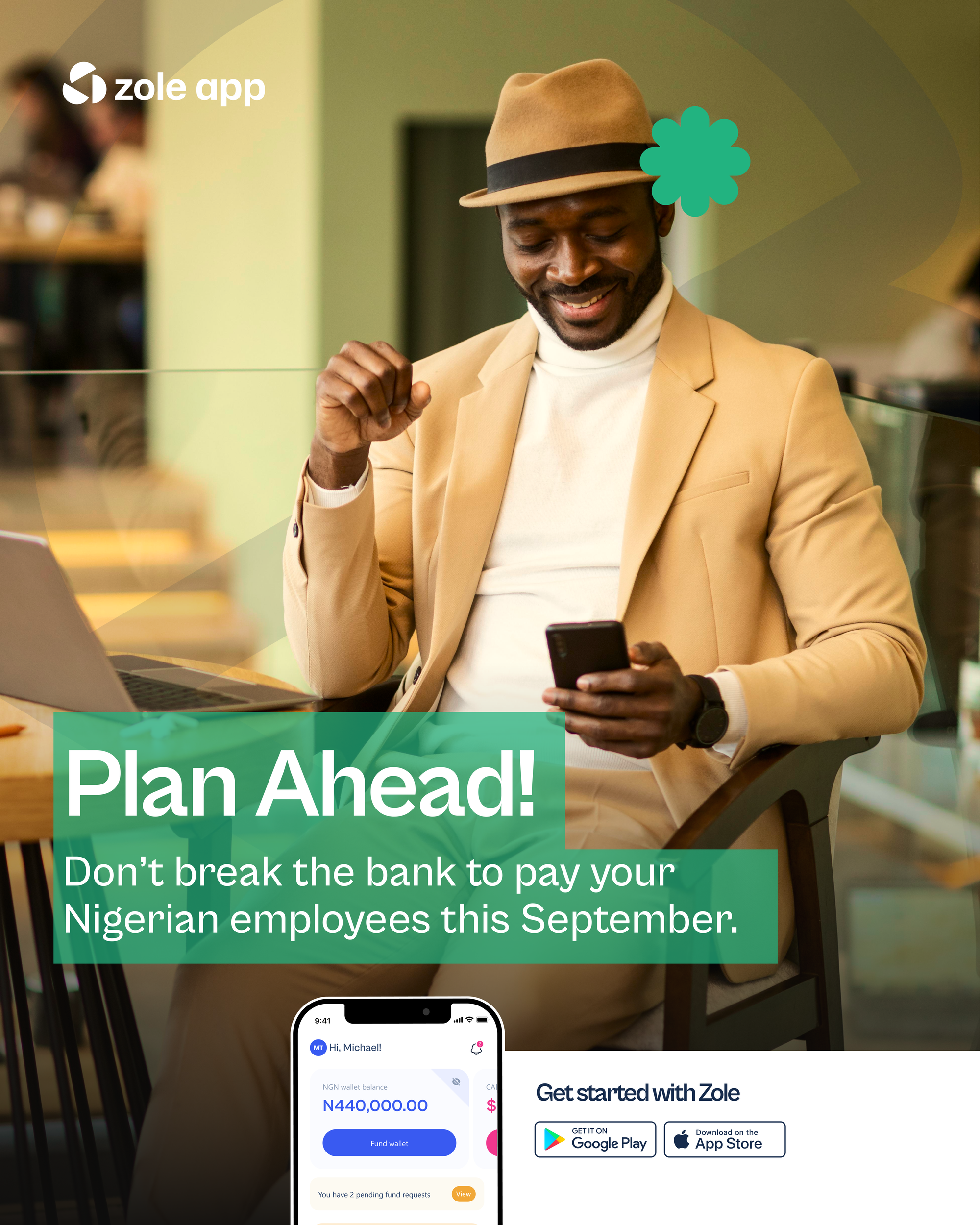"My Brain Couldn't Take It Anymore": The Data Analyst Who Pivoted to Marketing. Now, She's CMO of a Fintech That's Revolutionizing African E-Commerce

The data analyst who exhausted every hint option on coding assessments, then discovered her real talent was getting 33.4K views on a hotel ad that converted her doubting boss into a believer.
Most people remember the exact moment they realized they were in the wrong career. For Chidinma Akpati, it happened while staring at a Python assessment, having exhausted every hint option and scoured Googled frantically but still coming up empty.
"I think my brain couldn't take it anymore," she recalls about her attempt to transition from data analysis to advanced programming. "Most of the assessments, I would exhaust the hints option, Google everything, check everywhere. I still couldn't figure it all out."
That moment of coding defeat would redirect her toward a career path she never saw coming: marketing. Today, less than five years later, Chidinma is the Chief Marketing Officer at AgoGo & AgogoPay Africa, a fintech startup building e-commerce and payment solutions across the continent. She's built communities from zero to thousands of members in a week, convinced skeptical bosses with viral ad campaigns, and developed AI-powered lead generation systems that personalize outreach at scale.
But her journey from Delta State to the C-suite involved more than just pivoting from code to campaigns. It required recognizing her natural talents, learning to leverage failure as redirection, and building expertise across multiple marketing disciplines while the entire industry transformed around emerging AI tools.
What You'll Discover in Chidinma's Journey:
- How her data analysis dreams crashed against the reality of Python and R programming
- Why her real estate sales experience became the foundation for her marketing career
- The family connection that gave her first hands-on marketing experience
- How she convinced a traditional marketing skeptic with 33.4K video views
- The community-building strategy that grew her audience from zero to thousands
- Her multi-AI workflow that combines Claude, Copilot, Perplexity, and ChatGPT
- The data scraping system that personalizes lead generation for fintech clients
- How she built her expertise across email marketing, advertising, and product marketing
- Why she believes AI tools should complement rather than replace human creativity
- Her framework for continuous learning while wearing multiple marketing hats
When the Data Dream Died
Chidinma began her data journey full of excitement, building “beautiful dashboards using Tableau and Power BI” and then moving into heavier tools. “I proceeded to write in SQL and PostgreSQL, and then I got to R and Python,” she says. “I think my brain couldn’t take it anymore, so I just stopped there.”
She could have pushed on, but the learning curve felt like grinding against a wall: the more she forced it, the less joy she got. Rather than exhaust herself on concepts that didn’t click, she chose to pivot toward work that felt intuitive and energizing.
That decision wasn’t abandonment, because those early data months left her with a real advantage: an ability to read messy numbers, build persuasive visuals, and frame business problems analytically. What she lost in chasing advanced programming, she gained in analytical instincts that would later shape her marketing approach.
The turning point came when she looked away from the screen and back at her résumé, but it wasn’t a technical role that stood out, it was something from outside tech entirely.
The Sales Foundation:
“Prior to this time, I used to work as a salesperson for a real estate company, and I was able to get some leads. I was able to get some customers that converted into actual customers because they paid for these properties.”
At first it felt like just another job, but the day-to-day of selling taught her the fundamentals of persuasion: how to spot what a prospect really needed, how to explain value so it landed, and how to shepherd someone from interest to decision.
Those lessons mattered, because the same arc (identify a need, communicate a solution, remove friction) maps exactly to effective digital marketing. The tools change, but the human mechanics do not.
So she said, in her own words, “Okay, let’s do digital marketing.” She dove into the Google Digital Marketing course, consuming the modules and finding the material immediately engaging. Unlike advanced programming, marketing felt natural and practical, something she wanted to spend more of her time doing.
Still, digital marketing is wide, but depth matters. Surface-level knowledge can get you hired for a task, because real impact comes from specialization, knowing one lane well enough to move the needle.
Rather than rush into job applications, she chose a low-risk testing ground to practice what she was learning, because applying theory to real problems would reveal the gaps faster than any coursework.

The Family Testing Ground
Rather than rushing into job applications, Chidinma found her first real marketing laboratory close to home: her aunt’s NGO focused on women’s issues.
“I started working with one of my aunts. She owns an NGO, Women... She was trying to seek partnership with a particular company in the UK, and I was telling her, ‘Auntie, this is not going to work if you don't have a digital presence at all.’”
It sounded simple, but the reality was daunting. Her aunt’s organization had no digital footprint, no content, and no prior experience with online channels.
That blank slate turned into an advantage, because it forced Chidinma to build everything from scratch, learning the nuts and bolts of social media management in real time while directly seeing what worked and what didn’t.
“From there, I drafted out my resume and added her company as my first company that I had experience with, then I went ahead to apply for more internship roles just to build my knowledge on this path that I chose.”
Some might have waited until they felt fully qualified, but Chidinma understood that progress comes from practice, not perfection.
Her approach worked, because she combined two smart moves: using the family project as her testing ground and then leveraging that experience to secure additional opportunities.
The family connection provided a safe environment to experiment, but it also came with accountability. If she failed, her aunt’s organization would suffer. That pressure pushed her to take her learning seriously.
The environment was forgiving, because mistakes didn’t cost her career. Instead, they sharpened her instincts, taught her how to test different strategies, and gave her confidence in her growing methodology.
By the time she left the NGO, she wasn’t just a learner anymore, she was a practitioner. But the real test of her abilities came later, when she encountered her first major marketing challenge: a skeptical boss who demanded proof, not promises.
The 33.4K Views That Changed Everything
Chidinma’s defining moment as a marketer came during her work with Seth Hotel, where she faced a boss who refused to believe in digital marketing’s effectiveness compared to traditional advertising.
“I came in as a social media and marketing manager, and my boss didn't believe in ads. He believed in traditional marketing—go to the radio station, put up banners and all that. I wanted to make him know that this channel we're trying to use can give us results.”
Rather than argue theoretically about digital’s potential, she proposed a practical demonstration that would provide measurable results.
“I told them we were going to create a video. I came up with a concept, wrote the script, and called a couple of influencers—one mini and one micro-influencer. I got a videographer, we crafted everything, and it came out well.”
The project required coordination on multiple fronts, but Chidinma managed every piece: scriptwriting, influencer collaboration, videography, and ensuring brand alignment.
Her efforts paid off, because within days the ad racked up exactly 33.4K views across Meta platforms.
“I ran ads on that video across Meta platforms, and in the space of days we had 33.4K views. I remember the digits, 33.4K views.”
The results were impressive, but more importantly, they offered concrete proof that digital marketing could deliver measurable impact at scale.
This mattered, because it highlighted the difference between traditional marketing’s broad, untargeted methods and digital’s precision, measurability, and reach.

The Conversion Moment
“I screenshotted the results and showed them to my boss. You know these doubting Thomases, they don't want to believe people. But he didn't have an option after seeing those numbers.”
The numbers didn’t just change her boss’s mind, but also unlocked Ad budget and creative freedom for her to test bigger ideas.
The experience stuck with her, because it proved a simple truth: in organizational contexts, data-driven results speak louder than arguments.
More importantly, the campaign validated her ability to handle complex, multi-stakeholder projects from concept through execution, skills that would anchor her rise into leadership roles.
The Week She Built a Thousand-Person Community
While working on client projects, Chidinma stumbled upon a hidden strength: community building, the art of gathering people around shared interests and professional needs. It became clear during her work with MoreTechies, where she achieved numbers that seemed almost unreal.
“I built a community from zero to a thousand in the space of one week, from zero to a thousand in a week for MoreTechies.”
Growing a community that fast might look like luck, but it actually demands something more, an understanding of audience psychology, clear value propositions, and the mechanics of network effects.
Her growth wasn’t accidental, because she knew how to design communities that gave people a reason to join, stay, and invite others.
The Personal Application
“When I saw that I could do this for this company, I started my own community alongside. So I started ‘Tech People Talk’ and sharing tech opportunities in the community.”
She could have kept her skills locked inside client projects, but she wanted a space where she could test ideas freely and build around her personal passions.
That decision mattered, because it gave her full control—she could experiment, pivot quickly, and learn what scaled without needing anyone’s approval.
The results proved she was onto something. “WhatsApp, we’re at 3K. Unfortunately, earlier this year my Telegram was hacked and I lost all of them—we had 6K plus. So currently we are at 500 for Telegram, but we have different communities.”
Losing a 6,000-member community could have ended the experiment, but Chidinma treated it as a lesson rather than a defeat.
It made her sharper, because she realized the importance of platform diversification, community backups, and resilience in the face of digital setbacks.
The rapid growth (especially hitting 1,000 in a week) wasn’t just a vanity metric. It showed she understood how algorithms, timing, and engagement loops actually work. These weren’t accidental wins, but deliberate results born of systematic community-building strategies.
That mastery of human connection gave her an edge, because it created a foundation she could later amplify with technology, specifically, a new set of tools reshaping marketing itself: artificial intelligence.

The AI Arsenal That Powers Modern Marketing
As marketing became increasingly digital and data-driven, Chidinma developed a sophisticated workflow incorporating multiple AI tools for different aspects of campaign development and execution. Her approach reflects strategic thinking about where different AI capabilities provide the most value.
"I use a couple of LLMs to help with my ad copy. Just to mention a few, I use Claude a lot. I use Copilot, I use Perplexity, I use Gemini Pro, and then I use ChatGPT."
Rather than relying on a single AI platform, she's built a multi-tool system that leverages different AI strengths for specific marketing tasks.
"Most times, if I get a generic response from ChatGPT, I carry it to Claude to give me more details. So I come up with a copy, come up with a concept, and I execute."
This workflow suggests deep understanding of different AI platforms' capabilities and limitations. ChatGPT might provide initial concepts, but Claude offers more detailed analysis and refinement. The ability to seamlessly integrate multiple AI tools reflects sophisticated technical fluency that most marketers haven't yet developed.
The Data-Driven Lead Generation System:
"I use a tool that can scrape data and then not only scrape data to get information of these persons, but also draft a template of a particular message."
Her lead generation approach combines data collection with AI-powered personalization, allowing her to create targeted outreach campaigns at scale.
"Someone searched about automobiles on our site. It can scrape the data and then direct a personal message to them like, 'I saw that you liked Range Rovers, and at this place you can get Range Rover in the space of six months and we'll spread your payments across this and this.'"
The system provides comprehensive prospect information: "It gives me their website, their email, company email, their LinkedIn page, and a couple of other stuff as well."
This represents sophisticated marketing automation that combines behavioral tracking, data enrichment, and personalized messaging—capabilities that would have required large teams and significant technical infrastructure just a few years ago.
From Assistant to Chief Marketing Officer
Chidinma's career progression from junior roles to executive leadership happened relatively quickly, but reflected systematic skill development across multiple marketing disciplines rather than just promotional advancement.
"Four years ago, I started out as a junior social media assistant position after interning for a couple of companies. And trust me, it's never enough. I'm someone that aspires for growth."
Rather than specializing narrowly in social media management, she made a strategic decision to develop capabilities across the entire marketing spectrum.
"Aside from social media management, I had to take up all those skillsets. I had to learn how to do email marketing properly, I had to learn how to run ads—Google ads, Facebook ads, Twitter ads—and I got a bit into product management and marketing just to get more knowledge so I can fill up the role of a good marketer, performance marketer, head of socials."
This broad skill development positioned her for senior roles that required understanding of integrated marketing strategies rather than just executing specific tactics.
The Current Role:
"Currently I work with a tech startup as CMO, Chief Marketing Officer. From that time to now, this is what my growth has brought me or helped me attain or achieve."
The CMO position at Agopa Africa involves marketing for complex fintech products with multiple revenue streams and customer segments.
"Agopa Africa is an e-commerce platform where merchants can list their products—for now, we only do automobiles, real estate, solar panels, and heavy-duty machines. We have three payment structures: you can get financing, you can buy now and pay later, you can save to buy, and you can save to own."
Marketing these products requires understanding complex financial services, multi-sided marketplace dynamics, and the regulatory environment for fintech products across African markets. The role demands much more than traditional social media marketing or advertising execution.
"We also have a payment API called AgoPay. The API is built so companies that want to adopt the buy now, pay later structure can use our API to manage their payment structure and spread payments across each month."
Marketing a B2B API product to enterprise clients requires completely different strategies than consumer-facing e-commerce marketing, demonstrating the breadth of expertise her current role demands.
The Multi-Hat Reality of Modern Marketing Leadership
Working as a CMO at a startup means responsibilities that extend far beyond traditional marketing boundaries. Chidinma's role requires capabilities across strategy, execution, technology, and business development.
"As a CMO for the tech firm that I work with, I scrape data of prospect clients, and then also niche down to the current search that they made recently."
This hands-on approach to lead generation reflects the reality of startup marketing roles—executives often need to execute tactical work while developing strategic direction for the company's growth.
The technical sophistication required is significant: "The tool I recently started using can help me scrape data of prospect clients and then direct personal messages to them based on their recent activity."
Beyond individual marketing tactics, her role involves understanding the entire customer acquisition funnel for multiple product lines serving different market segments.
The Learning Imperative:
"I had to learn how to do email marketing properly, run Google ads, Facebook ads, Twitter ads, and get into product management and marketing just to get more knowledge."
This continuous learning approach reflects the reality that marketing technology and best practices evolve rapidly. Success requires staying current with new platforms, tools, and strategies while maintaining expertise across established channels.
The breadth of capabilities she's developed—community building, paid advertising, email marketing, data analysis, product marketing, and AI integration—positions her for senior marketing roles across different industries and company sizes.
Her experience also demonstrates how modern marketing leaders need to be comfortable with both strategic thinking and hands-on execution, particularly in startup environments where resources are limited and results need to be achieved efficiently.
The Strategic Approach to AI Integration
Rather than adopting AI tools randomly or following trends, Chidinma has developed a systematic approach to incorporating artificial intelligence into her marketing workflows based on where different platforms provide the most value.
"For ad copy, I use Claude a lot, Copilot, Perplexity, Gemini Pro, and ChatGPT. Most times, if I get a generic response from ChatGPT, I carry it to Claude to give me more details."
This multi-platform approach reflects sophisticated understanding of each AI system's strengths and limitations. ChatGPT might provide initial concepts quickly, but Claude offers more nuanced analysis and detailed refinement. Perplexity excels at research and fact-checking, while Copilot integrates well with existing Microsoft workflows.
The ability to seamlessly move between different AI platforms and combine their outputs represents advanced technical fluency that most marketing professionals haven't yet developed.
The Personalization Engine:
"The tool can scrape data and draft templates for particular messages, then personalize them based on recent user behavior. Someone searched about automobiles, so it creates a direct personal message like, 'I saw that you liked Range Rovers, and here you can get one with six months financing.'"
This represents sophisticated marketing automation combining behavioral tracking, data enrichment, and AI-generated personalization—capabilities that would have required large technical teams just a few years ago.
The system provides comprehensive prospect intelligence: "It gives me their website, email, company email, LinkedIn page, and other relevant information."
This data richness enables marketing campaigns that feel personal and relevant rather than generic and intrusive, addressing one of the major challenges in digital marketing today.
The Integration Philosophy:
Her approach to AI reflects strategic thinking about human-AI collaboration rather than replacement. AI handles data processing, initial content generation, and personalization at scale, while human judgment guides strategy, creative direction, and relationship management.
This balanced approach positions her well as AI capabilities continue expanding—she's comfortable leveraging automation for efficiency while maintaining the human insight that drives effective marketing strategy.
Building Communities in a Digital-First World
"I built a community from zero to a thousand in the space of one week for MoreTechies. When I saw that I could do this for the company, I started my own community alongside Tech People Talk."
The speed of this growth indicates sophisticated understanding of social media algorithms, content timing, and audience psychology. Building 1,000 engaged members in seven days requires more than just posting content—it demands systematic approaches to value creation and network effect activation.
The Multi-Platform Strategy:
"We have different communities—WhatsApp, we're at 3K. Unfortunately, earlier this year my Telegram was hacked and I lost all of them. We had 6K plus, but currently we're at 500 for Telegram."
The platform diversification reflects strategic thinking about community management and risk mitigation. Different platforms serve different purposes and audience preferences, requiring tailored approaches for each environment.
The telegram hack that eliminated 6,000 members represents a significant setback that would discourage many community builders. Instead, Chidinma treated it as a learning experience about backup strategies and platform redundancy.
The Value-First Approach:
"I started sharing tech opportunities in the community, and people found genuine value in the content I was providing."
Successful community building requires consistent value delivery rather than just promotional content. By focusing on helping community members find opportunities and solve problems, she created sustainable engagement that drives organic growth through referrals and word-of-mouth.
The community-building expertise translates directly to her professional marketing roles, where understanding audience development and engagement drives success across all digital marketing channels.
The Future of Marketing Leadership
Chidinma's journey from data analysis burnout to marketing leadership illustrates several trends reshaping professional development in digital industries: the importance of recognizing natural talents, the value of broad skill development over narrow specialization, and the strategic integration of AI tools with human creativity.
Her approach to career development emphasizes building complementary capabilities that create synergistic value. Community building enhances social media marketing, data analysis improves campaign optimization, and AI fluency multiplies productivity across all marketing functions.
"I had to take up all those skillsets—email marketing, Google ads, Facebook ads, Twitter ads, product management and marketing—just to get more knowledge so I can fill multiple roles effectively."
This breadth of expertise positions her for senior roles across different industries and company stages, from early-stage startups requiring hands-on execution to established companies needing strategic marketing leadership.
The Technology Integration:
Her multi-AI workflow demonstrates how marketing professionals can leverage artificial intelligence for enhanced productivity without losing the human insight that drives effective campaigns. Different AI platforms serve different purposes, and strategic combination of their capabilities creates competitive advantages.
The data scraping and personalization systems she's developed represent the future of marketing automation—AI-powered tools that enable individual marketers to achieve results that previously required large teams and significant technical infrastructure.
The Community-First Philosophy:
Her success building engaged communities reflects understanding that modern marketing is fundamentally about creating value for specific audiences rather than broadcasting generic messages to broad demographics. This approach becomes more important as traditional advertising becomes less effective and consumers demand more personalized, relevant interactions.
From that moment when Python assessments overwhelmed her analytical capabilities to leading marketing strategy for a multi-product fintech serving African markets, Chidinma's story demonstrates what becomes possible when career setbacks redirect you toward work that aligns with your natural strengths.
Her framework (recognize your talents, build broad capabilities, integrate new technologies strategically, and focus on creating genuine value) offers a template for professional development in rapidly changing industries where adaptability matters more than narrow expertise.
Growing African businesses requires more than great marketing—it requires financial infrastructure that keeps up with ambition. Chidinma’s journey shows how strategy, skills, and the right tools can unlock growth, but even the best campaigns can only go so far without payment systems that work across borders.
That’s where Zole comes in. Because whether you’re an entrepreneur scaling across Africa, a professional managing clients abroad, or a creator serving a global audience, Zole makes cross-border payments seamless, secure, and reliable.
Download the Zole app today and experience how we’re powering Africa’s growing digital economy, one transaction at a time.



Comments ()